|
| |
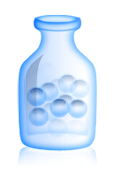
Bubblers &
Tanks |
| |
|
| The process of Electrolyzing
water has a minimum of two by-products, hydrogen and oxygen gases. As the
gases are made, they rise to the top of the water - in the form of bubbles.
The bubbling action on the surface can be quite turbulent. The turbulence
can cause foam. The foam can collect on the waters surface and get carried
or sucked into the engine. Is that a good thing or a bad thing? Well, a
bubble is a gas trapped inside of a membrane. In our case, it is a water
membrane. If you jump into a lake, you come out wet - right? Well the gases
come out of the hydrogen generator wet. They are trapped inside a thin
membrane of water. Some of the bubbles are big; some are small; some are in
the form of mist; and under certain conditions, they are sometimes in
the form of steam (steam is not a bubble).
As long as the water is pure, the bubbles are not much
of a problem for gasoline engines. Gasoline engines are always burning fuel
mixed with water vapor in the air. They will even run while you pour water
down their throat. Diesel engines are not like that. Water will not compress
into vapor, inside the combustion chamber, thus it will
lockup the piston and damage the engine. Water vapor however will compress
so it is ok. Diesel engines burn water vapor all of the time; it comes from
the air.
One by-product of burning gasoline and diesel fuel is
also water. Both fuels are hydrocarbons. Some by-products of burning carbon
are Carbon Dioxide and Carbon Monoxide. The only by-product of burning
hydrogen is water. So while your engine does not burn water, it sure makes a
lot of it, in the form of steam.
If our engines can handle water vapor, then what is the
big deal about having a bubbler? For the most part, the problem is the other
contents of the water. We add Electrolytes to the water - to increase gas
production. Water is a very poor conductor of electricity - and the
electrolytes change that for us, Chemically. It is the chemicals in the
water that can be destructive to our engines. As the gases rise to the
surface of the electrolyzer, they get trapped inside a water membrane. The
membrane contains the chemicals that are in the water. The bubbles, and the
mist contain traces of the chemicals, That contaminated moisture has the
potential to cause harm to aluminum parts in our engines.
The bubbler's job, in most cases, is to get rid of any
foam. It can also be used to rinse or wash the gases; in other words, get
rid of the chemicals. A bubbler that contains electrolytes can not wash out
or remove electrolytes. To do this, you will need a second bubbler which
does not contain any
electrolytes. I will cover this more, later.
Sometimes a bubbler is used as a Flash Arrestor;
but not reliably. I have witnessed engine backfires that passed from the
intake manifold,
to the bubbler, through the water (from bubble to bubble) and out of the
bubbler to the
electrolyzer. The closer the bubbles are together, the better the chances
for a flashback to make it through the water. HHO is an explosive gas. The
explosion travels faster than a speeding bullet; over 3,000 feet per second.
Don't trust a bubbler to stop a flashback.
|
|
Wet Cell - Water Bath Systems |
Hydrogen generators that do not have sealed off water compartments, between
each set of electrode plates or tubes, are considered water bath systems. In
other words, water can flow or touch all parts of the plates; the bottoms,
the tops, the sides. My tube cell is a prime example; or Joe Cell design as
some want to call it, My tubes are submerged in a container of water. Water
fills the tubes from the bottom and from the top (if I keep the water level
up). I allow 4 to 5 inches of freeboard above the top of the tubes;
freeboard is waterless head space. I use this area to dissipate the foam. By
doing this, I do not need a bubbler; it is built in.
This is an excellent design for cold weather. If and
when the water freezes, the generator can not produce hydrogen and oxygen.
As soon as the water starts to thaw, the generator is safe to use. I only
have one hose on the generator; it is at the top of the water free space,
above the frozen water.
I could use a Bubbler as a Scrubber to wash or filter
electrolytes from the gasses. But by doing so, I would risk the safety of a
frozen generator. I do not have a problem with foam, so I choose not to use
a bubbler.
If you use a stainless steel container with tubes, for your water
bath system, you will not have to worry about your system breaking or
cracking when it freezes. At most, it will just push the hose off of the
lid. A tube stainless steel water bath system is by far the safest hydrogen
generator. It is also the most expensive to build.
|
|
Dry Cell Systems |
Hydrogen generators that have sealed off water compartments, between each
set of electrode plates or tubes, are considered dry cell systems. In other
words, water can not flow or touch all parts of the plates. The bottoms, the
tops, the sides are all sealed off so that water can not get past them. Each
set of plates forms a water tight compartment.
There is very little head space, if any. A lot of foam is produced and it
has no place to accumulate, so it gets pushed or pulled out of the
generator.
This system is going to need a Bubbler. The bubbler
can also be used to re-supply water to the Dry Cell. That would make it both
a bubbler and a tank. By installing the bubbler/tank above the Dry Cell,
water will circulate and help cool the generator.
Another option would be to use a separate Tank to
refill the Dry Cell, and use a Bubbler to wash/scrub the gases. If you do
this, you loose the cooling circulation. If you want the circulation, then
you will have to use a pump to keep the water circulating between the Tank
and the generator. In order to use the Bubbler as a washer, the hose from
the generator to the Bubbler needs to be- above the water line. It can then
be extended below the surface of the water. If you connect that hose at the
bottom of the bubbler, the water in the bubbler will mix with the water in
the generator. The water in the generator contains electrolytes. The water
in the bubbler does not.
A Dry Cell is disadvantaged when it comes to winter
driving. The main reason is the Bubbler. If the water in the bubbler
freezes, the water lines also freeze. The cell can not be operated safely
until ALL of the lines thaw. If the generator thaws out before the water
lines thaw, and you turn it on, the gases will build up pressure. If they
can not find an escape rout, they can self ignite under pressure.
A Dry Cell System is the most efficient electrolyzer
design. It is most popular built using flat plates, but it can be built
using tubes.
|
|
Caution Tips |
- Never assume the Lid on the Bubbler is sealed. Imperfections may
exist with the Tank, the Gasket, or the Lid. Give it a Blow Test. It is simple.
Tighten the Lid, stop-up all of the hose fittings - but one; blow
constant pressure into the tank via the one hose fitting. If there is a
leak, you will know it. That is, unless you blow like a blond (no pun
intended women). Do it like you are trying to blow up a balloon, not
blowing out a candle.
- Perform the Blow Test on the complete system; from the cell exit
hose, all the way to the engine input. If it will not hold pressure,
there is a leak. Hydrogen will find the slightest leak.
- Always test for HHO output where it enters the engine. Remove the
hose from the engine input and place it in a container of water. Bubbles
should be present when the HHO generator is operating.
|
| |
|
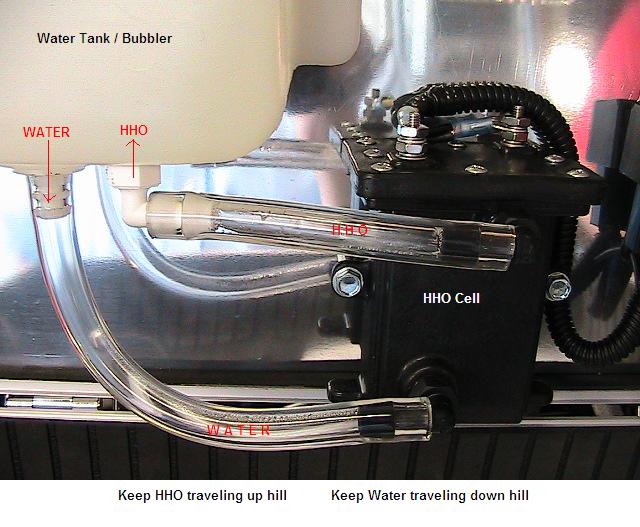
|
Tanks |
 |
 US Plastics US Plastics
 Flambeau Fluid Systems will custom make products for you - if you order in
quantities.
Flambeau Fluid Systems will custom make products for you - if you order in
quantities.
|
|
More Tanks |
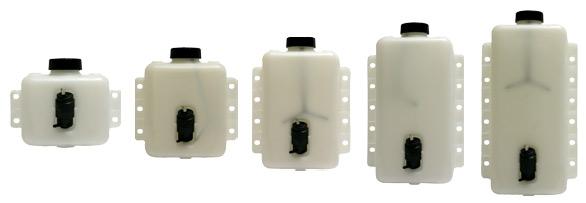 |
Tanks with 12v and 24v
Pumps Flambeau Fluid Systems will custom
make products for you - if you order in quantities.
 Pump tanks
Pump tanks
 Just Pumps
Just Pumps
|
|
Lids |
 |
 US Plastics Caps -
Un-vented, Heavy Duty US Plastics Caps -
Un-vented, Heavy Duty
 Flambeau Caps Flambeau Caps
|
|
Misc. Parts |
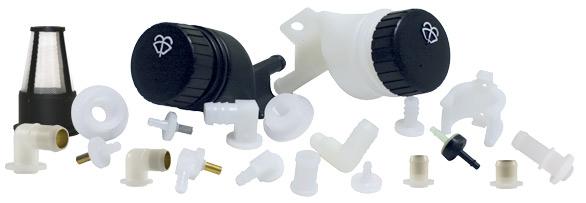 |
 US
Plastics US
Plastics
 Many types
available at Flambeau Fluid Systems Many types
available at Flambeau Fluid Systems |
|
|
|
|
|
|
 McMaster-Carr Tube Fittings
McMaster-Carr Tube Fittings |
|
|
|
|
|
|
|
|
|
|
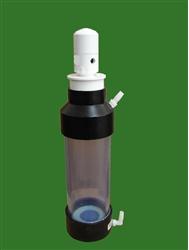
Heavy Duty Bubbler / Scrubber / with Flash Port
* 19 inches Tall
* 4 inches Wide
* 3/8 inch Barbs
 Available from
GreenFuelH2O Available from
GreenFuelH2O |
|
|
|
|
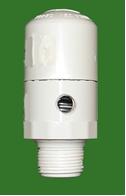 Flash Port
Flash Port
 Available from
GreenFuelH2O Available from
GreenFuelH2O |
|
|
Screen Strainers |
 |
Removable Neck Strainers; available in 2
sizes
 Flambeau
Flambeau |
|
Water Level Sensors |
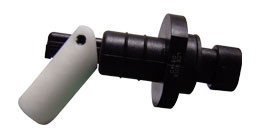 |
Level Sensors
 Flambeau
Flambeau |
|
Tubing |
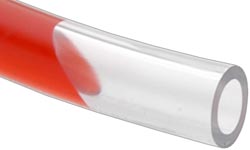 |
Masterkeeper Clear PVC Tubing
(thick)

http://www.mcmaster.com/#standard-pvc-tubing/=tcj18w |
|
 |
 US Plastics Tubing
US Plastics Tubing
Excellent physical and electrical properties. Wide range of working
temp. -100°F to 400°F. Fluorinated ethylene propylene (FEP) is a
chemically inert thermoplastic. Transparent tubing is excellent for
acids (all concentrations), aliphatic alcohols, aldehydes, bases,
esters, hydrocarbons (aliphatic, aromatic and halogenated), ketones and
strong oxidizing agents. Can be rigorously cleaned in boiling nitric
acid for high-purity analysis. |
|
|
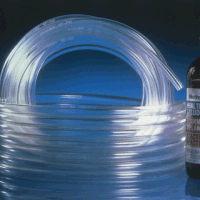 |
 Tygon® Inert
Tubing SE - 200 Tygon® Inert
Tubing SE - 200Tygon® Inert
Tubing can handle many applications where flexible tubing of the past
could not be used. It’s FEP inner inert, meaning it will not extract or
contaminate fluids being transferred, liner provides the ultimate in
chemical resistance and can handle a wide variety of fluids from
corrosives to MEK-based solvents. The fluid path will not impart odor or
taste, making it well-suited for food and beverage use. It meets FDA
criteria for food and beverage applications, as well as USP Class VI
criteria for biocompatibility. Use single barb insert fittings. Max
working temp 170°F.
|
| |
|
 |
Clear Reinforced
Tubing. Comes in 3/8 inch I.D and larger. Available at Lowe's home supply
stores. |
Page Last Edited -
04/03/2022
|